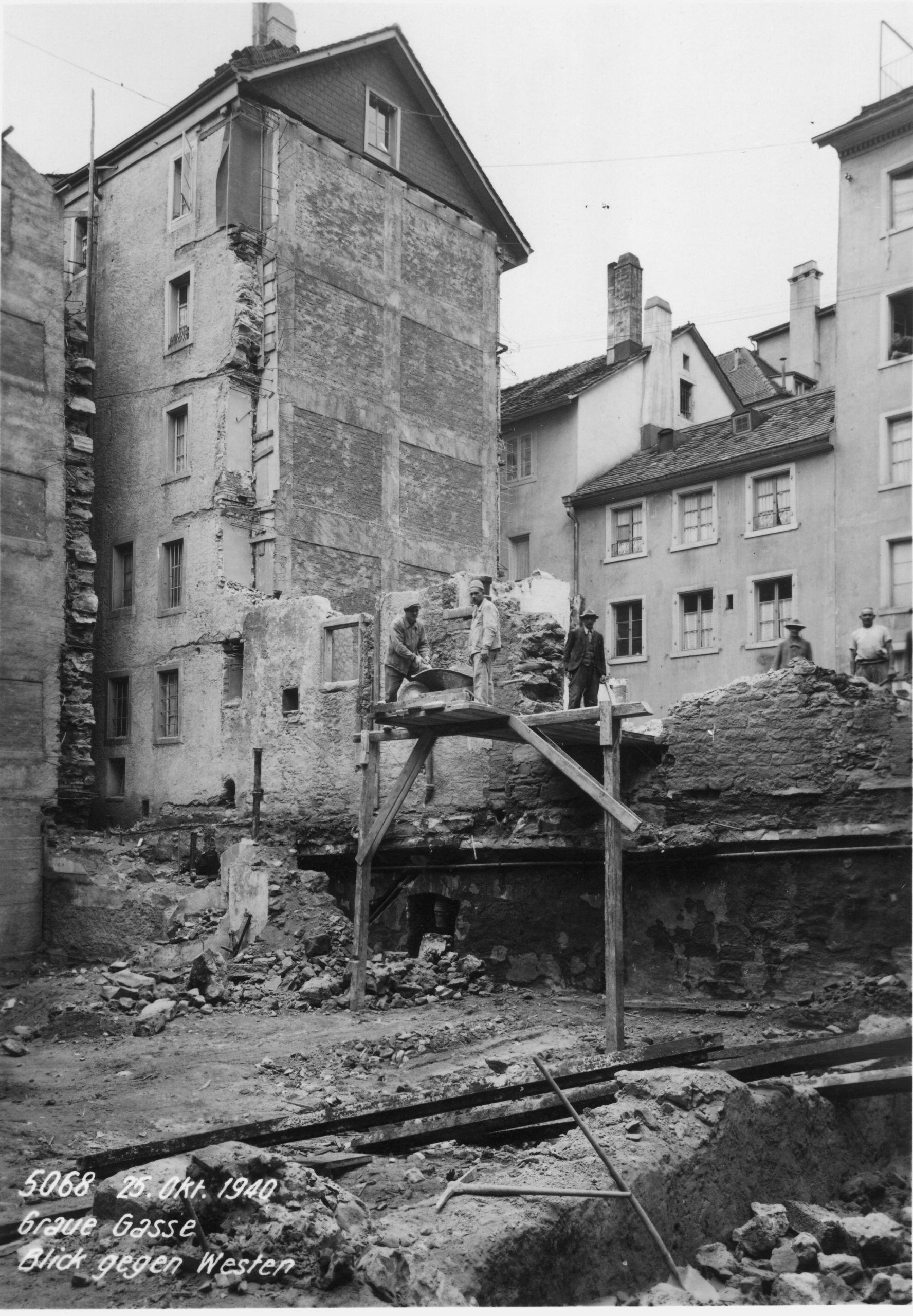Demolition as an Instrument to Unlock Commons
Graue Gasse
Graue Gasse
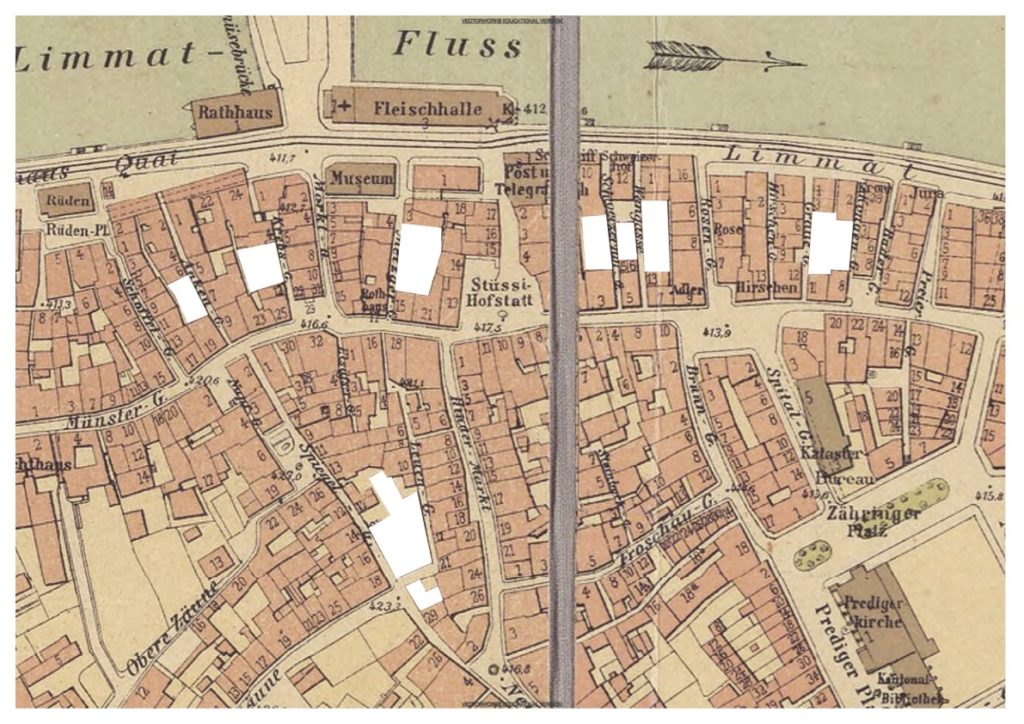
In the 1940s, a public discourse on hygiene in the most densely-populated areas of Niederdorf emerged. New scientific findings established a connection between housing density and various diseases and epidemics. The urban planner Steiner and his Commission for Old Town Redevelopment followed the modernist dictum of light, air and space to enhance the common health of the inhabitants. At the same time, however, the value of the old town as an identity generator and carrier was generally recognized. Tabula rasa planning, as in many other Western cities, was thus off the table.
In Zurich, the Commission encouraged public discussion about health and old town redevelopment through exhibitions and various information brochures. Furthermore, the local media shaped public attitudes towards demolition with shocking images of poor living conditions. A positive future incorporating planning for common spatial and material resources was being reinforced with examples from Swiss and German cities. Public approval of demolition was essential for possible interventions, as protest was feared, and expropriation deemed only a last resort due to high compensation sums. The public consent for quick and efficient measures made it possible for the Commission to buy private properties in the densest areas that became available on the market and to demolish them in order to create a series of public courtyards.
Since the medieval dwellings rarely have balconies and private green spaces, the life of the inhabitants takes place to a large extent in the neighborhood space on the streets and squares. The extraction of material from the historic city center provided, and still provides, valuable spatial resources for Niederdorf’s inhabitants and neighborhood life. But the negative spaces created through extraction did not correspond to ordinary courtyards, and had to be unlocked for commons through various actions and agents.
The produced spatial resources of Graue Gasse, for example, were unlocked for social and cultural practices through a minimal redesign. Six residential buildings were demolished to create a medium-sized courtyard. In four houses, the windowless fire walls appear as new facades. It is evident that one is dealing with the partially neglected rear sides of the buildings whose more representative facades are facing the main streets. Their age becomes visible in blind windows and layers of plaster. The ground was laid with cobblestones, in keeping with the city’s regulations, and planted with four trees. During the day, the courtyard is used for common garbage collection and bicycle parking by residents and workers. The fire walls of Limmatquai 84 and 86 were renovated in 1991, upgraded, and filled with public art.
In the context of “Dörflifäscht”, the annual district festivity, the enclosed space of the Graue Gasse courtyard is turned into a cultural common. The “Electrodorf” techno-festival transforms it into an outdoor techno-club. For this, the closed facades become the stars of the evening. They serve as projection surfaces for videos and visual art, creating a surrealistic atmosphere. The limited spatial conditions contribute to the nightclub-feeling, as it quickly gets crowded and surrounding facades create the acoustic sensation of an inside space.
Fischli, Melchior. Geplante Altstadt: Zürich, 1920-1960. Zurich: Chronos, 2012.
Klöti, Emil. «Die Altstadtsanierung in Zürich = L’assainissement des vieux quartiers de Zurich = Old town restoration at Zürich.» Habitation et urbanisme = Housing and Town Planning = Wohnungswesen und Städtebau, no. 3-4, 1940, pp. 16-25.
Aeschlimann, Max, and Roth, Emil. Thesen für Zürichs Altstadtsanierung. Zurich: 1943. p. 410.
Electrodorf. Electrodorf – Zürich Event, Version of 15.07.2022 15:40, online: https://www.electrodorf.com/.
Unlocking spatial resources of Graue Gasse
Author’s Work, 2022.
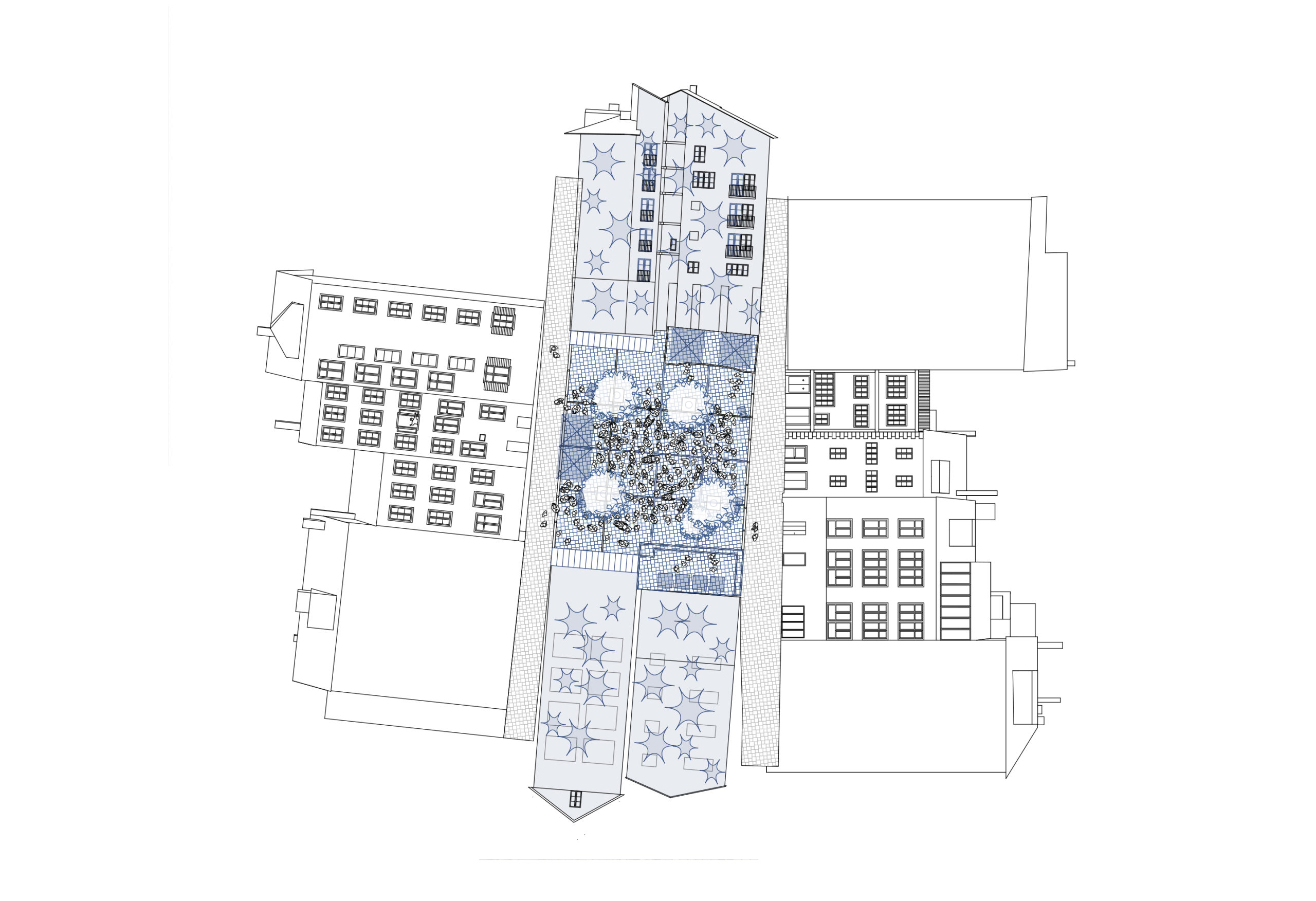
Coring of the Dark and Narrow Alleys
Müller-Brockmann, Josef: “Aufhellung der düsteren Altstadt.” in: Neue Zürcher Zeitung: Zürcher Altstadt- und Seeufergestaltung, 02.07.1948, p. 3.
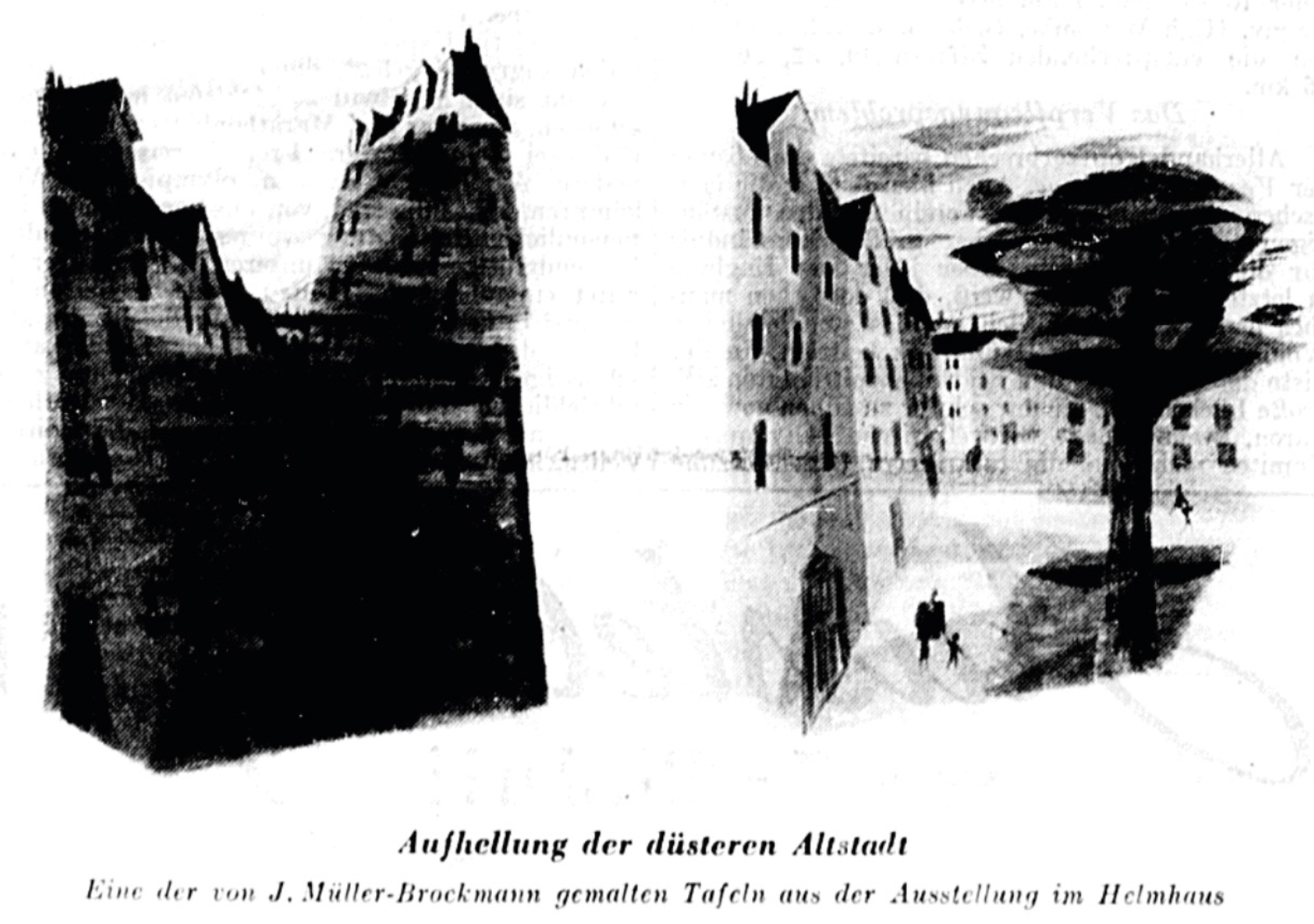
Introducing a Series of Courtyards in Niederdorf’s Dense City Fabric
Hofer & Burger: Plan der Stadt Zürich und Umgebung mit Angabe der Hausnummern. Zürich, 1885. ETH-Bibliothek Zürich, K 222051
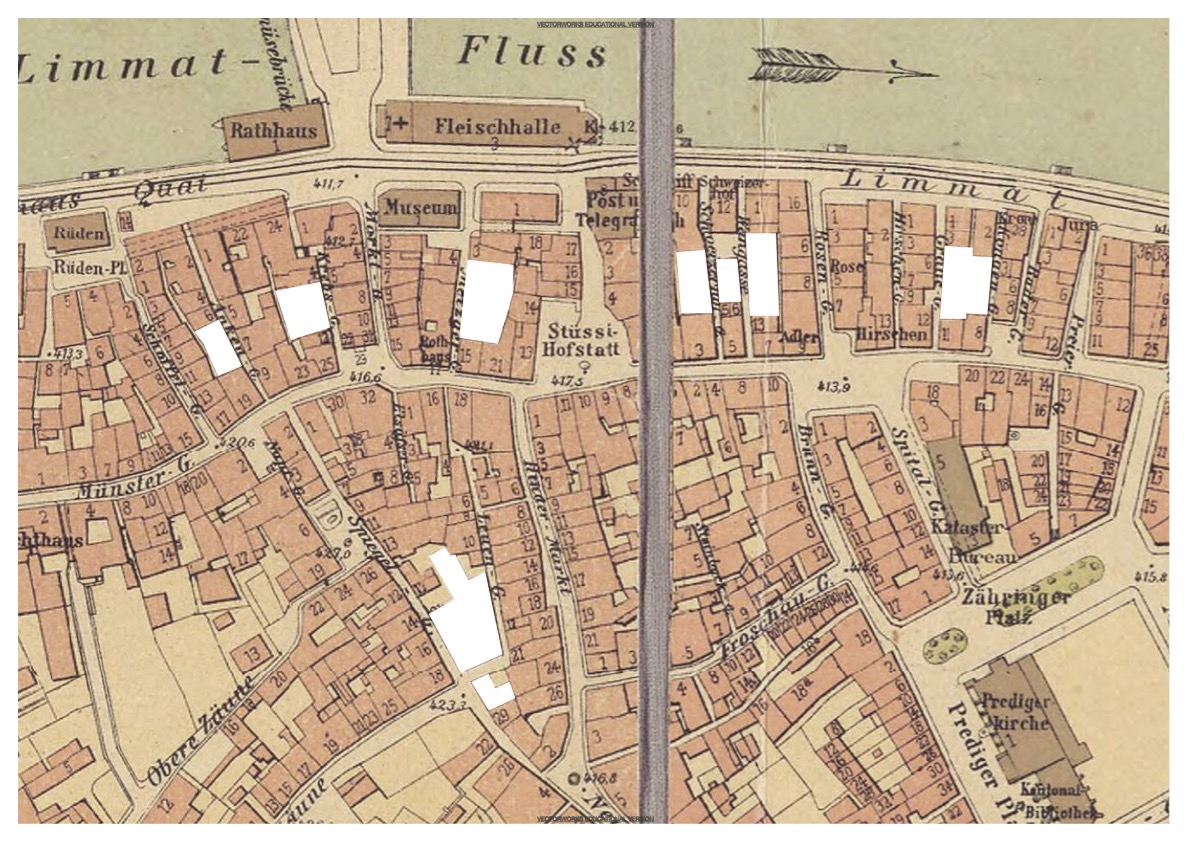
Creating Spatial Resources in Niederdorf
Author’s Work, 2022.
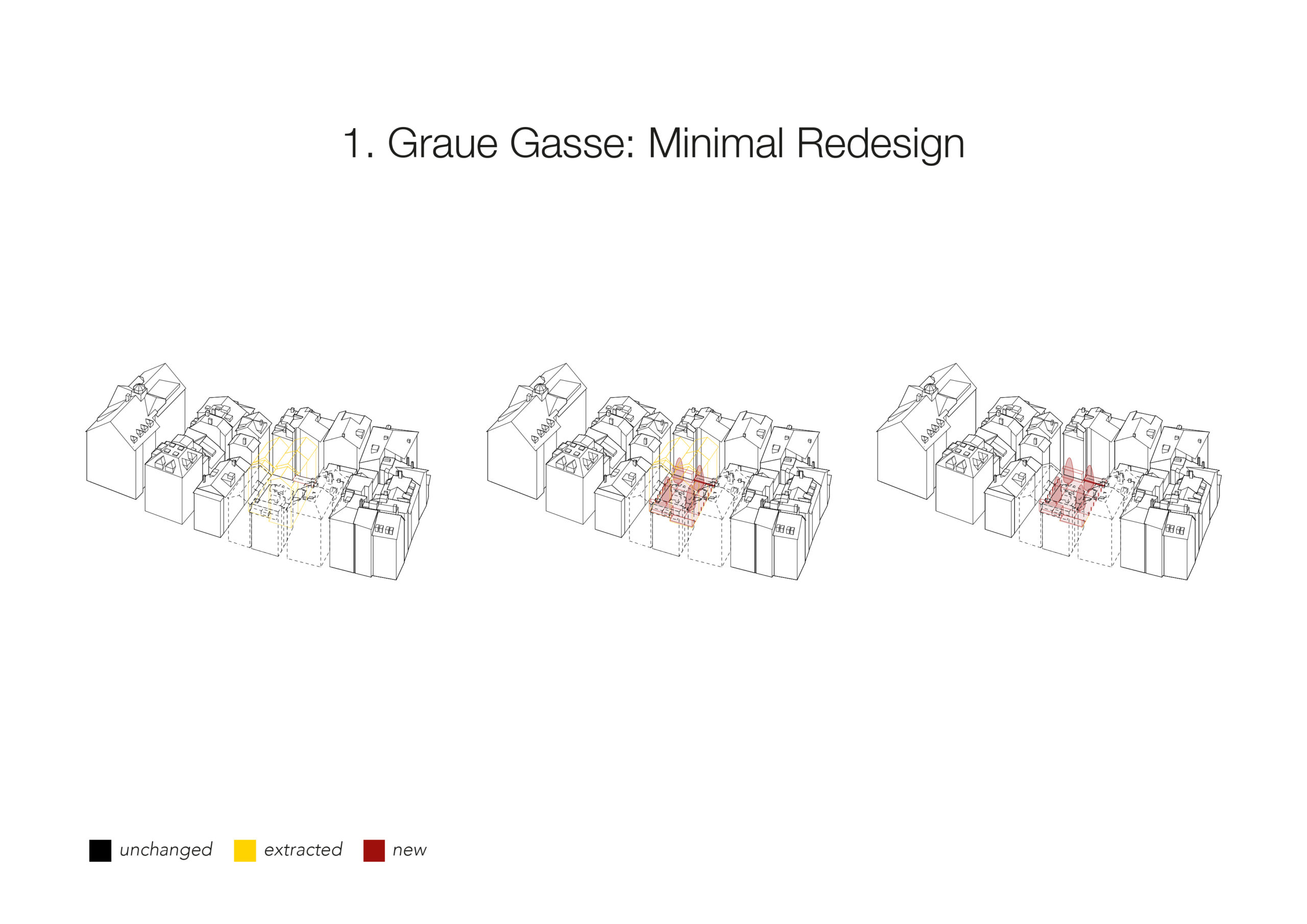
Signs of Demolition: Exposed Firewalls
Badergasse 6, Zurich, 1940, Zurich: Baugeschichtliches Archiv Zürich.
